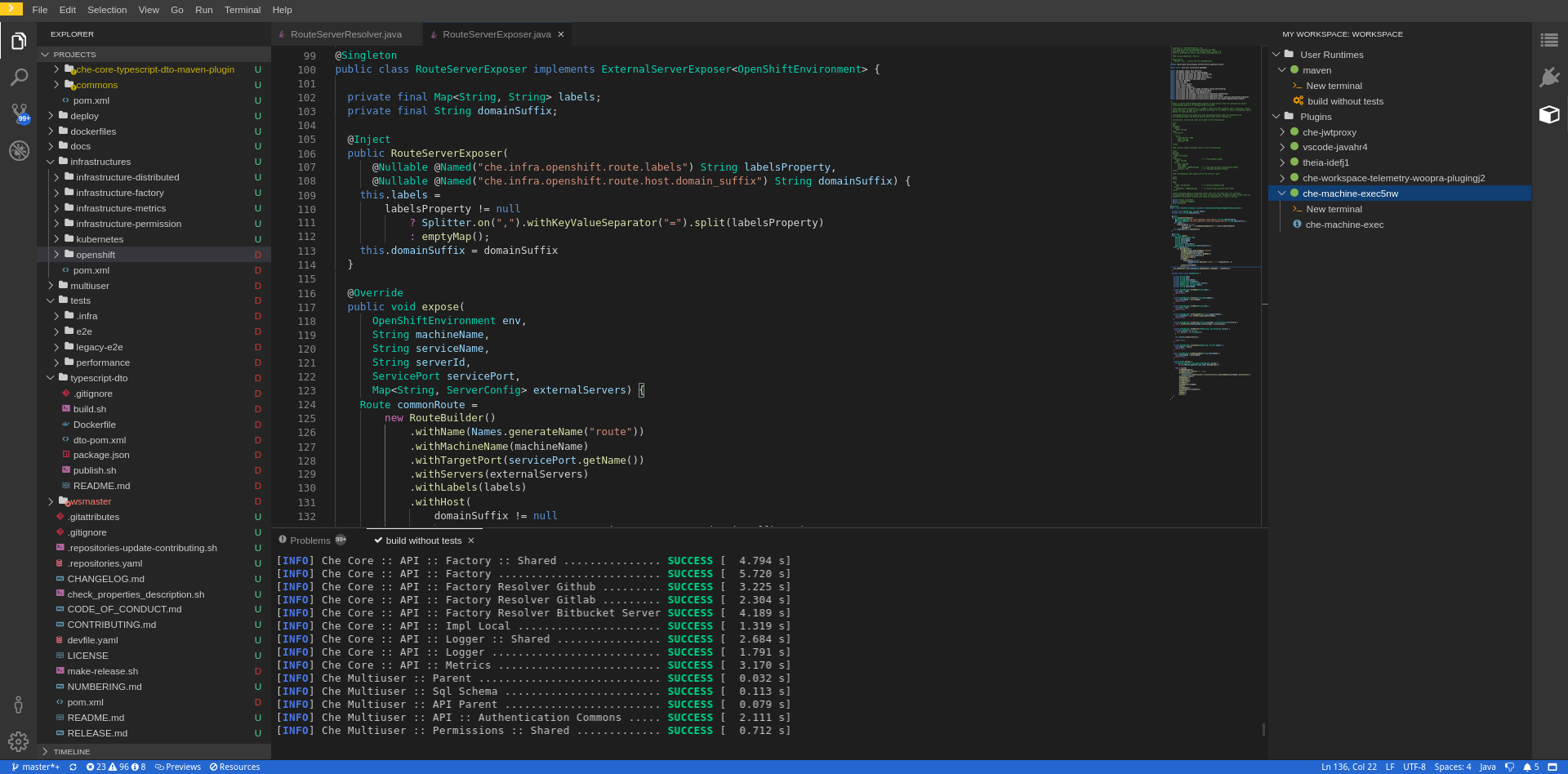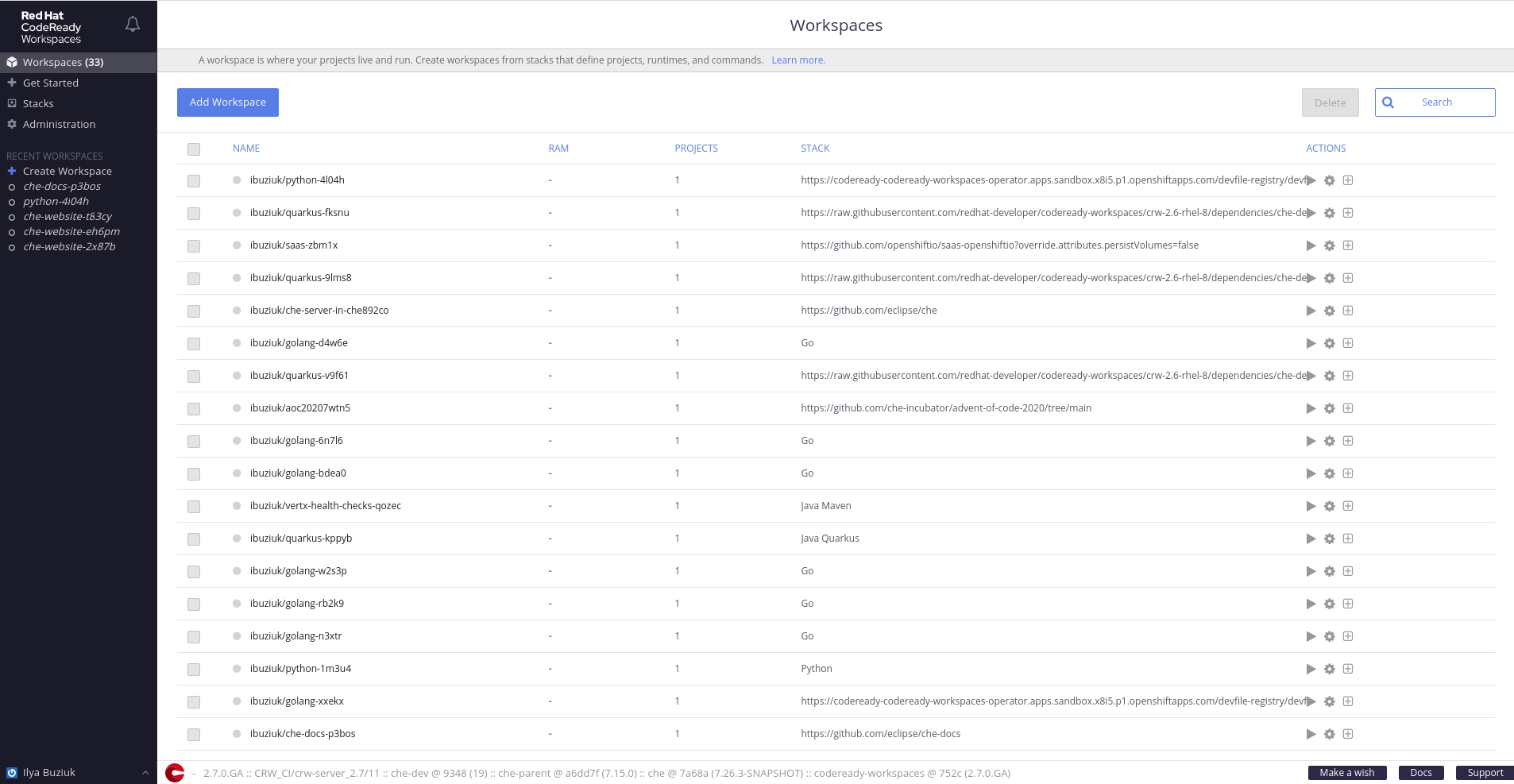A new resource is now available to make it easy to try out Eclipse Che. If you are new to Che, it is the industry’s first Kubernetes-native IDE that runs in containers. Running in Kubernetes brings sidecar containers, developer environment as code (automating setup). This means that you can code, build, start, debug Kubernetes applications all in one tool.
The New Eclipse Che Service
Whether you are a hobbyist or a commercial developer evaluating Che, the good news is that a new service has been made available. The service at che.openshift.io has been closed down, and replaced by a new service at workspaces.openshift.com. Accompanying the move is a spec bump for added value.
User Dashboard: Getting Started with CodeReady workspaces (click image to open full-size in new window)
Eclipse Che hosted by Red Hat is an open source product based on Eclipse Che running on OpenShift Dedicated. It is a new service that is part of Developer Sandbox for Red Hat OpenShift, and uses Red Hat CodeReady Workspaces. CodeReady Workspaces is built upon Eclipse Che and optimized for Red Hat OpenShift and Red Hat Linux.
Java workspace started from workspaces.openshift.com (click image to open full-size in new window)
Built on Eclipse Che, Red Hat CodeReady Workspaces is typically two versions behind project releases. With licensing, packaging, and support from Red Hat, CodeReady Workspaces offers a stable environment in which to test and deploy Eclipse Che. More details about Eclipse Che and Red Hat CodeReady Workspaces can be found in the official documentation.
Usage Terms
Eclipse Che hosted by Red Hat offers a platform for testing and validating Eclipse Che. While it is free of cost and readily accessible with few restrictions, there are certain time and usage limits to be aware of:
- Storage: 10 GB
- RAM: 7 GB
- Concurrent workspaces: 1
- Number of workspaces: Unlimited
- Number of projects per workspace: Unlimited
- Usage time limit: 30 days.
The account will be active for 30 days. At the end of the activation period, access will be revoked, all data will be deleted, and all existing workspaces will be lost. You can save data by pushing to remote beforehand, and workspace definitions can be exported via Workspace -> Configure -> Devfile. In order to start using Eclipse Che hosted by Red Hat again, a user must re-register.
User Dashboard: Workspaces (click image to open full-size in new window)
Easy Workspace Launch Badges
You can add in the README of your git repository (like this one) a badge to launch it in a Che Workspace. This allows you to edit, test, and debug the source code with one click without leaving your browser.
This is how the official badge looks like:
Here is the markdown to include it in a README file:
|
[](https://workspaces.openshift.com/f?url=<GIT_REPOSITORY_URL>) |
With GIT_REPOSITORY_URL that should be changed to the URL of the git repo where the README lives (for example https://github.com/eclipse/che). Read more about this feature in the documentation.
Test Drive Eclipse Che Today!
Together with Red Hat, we invite you to take advantage of this new resource and we welcome your feedback which you can provide by completing this form.
If you would like to learn more about how to contribute to the Eclipse Che project or the Eclipse Cloud DevTools working group, please reach out to us here. To stay up-to-date, sign up for our email list here.



